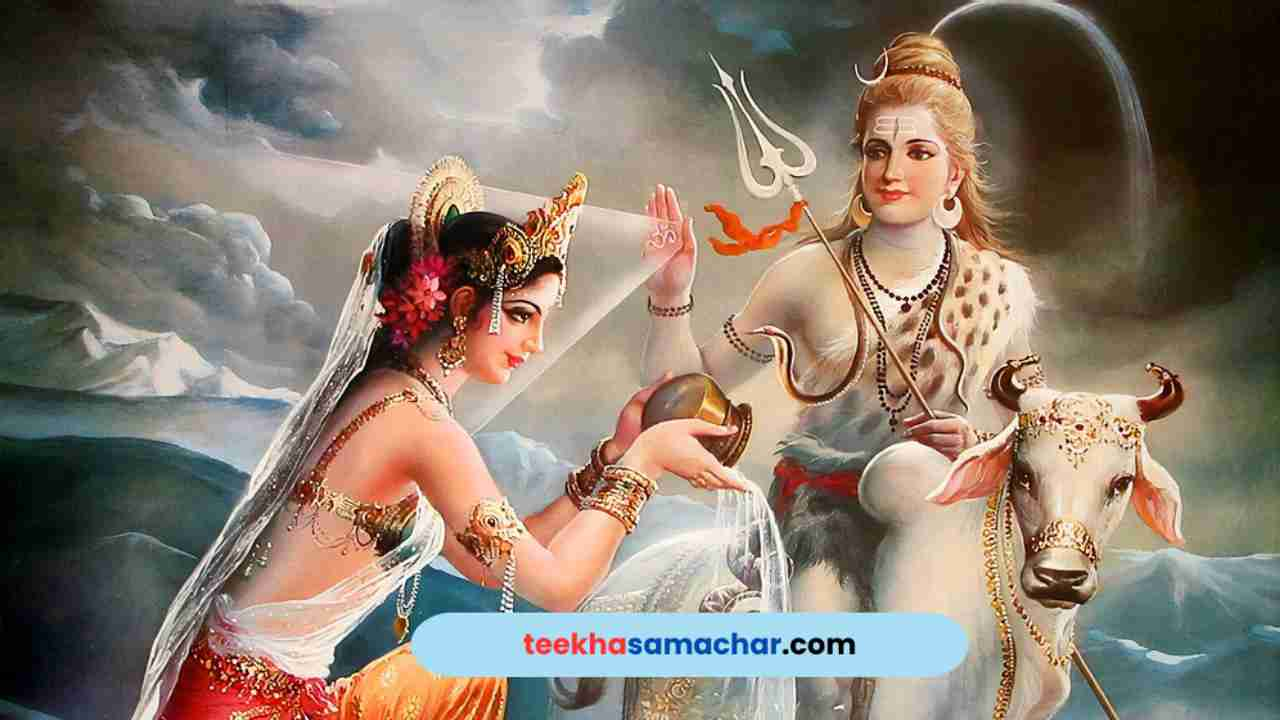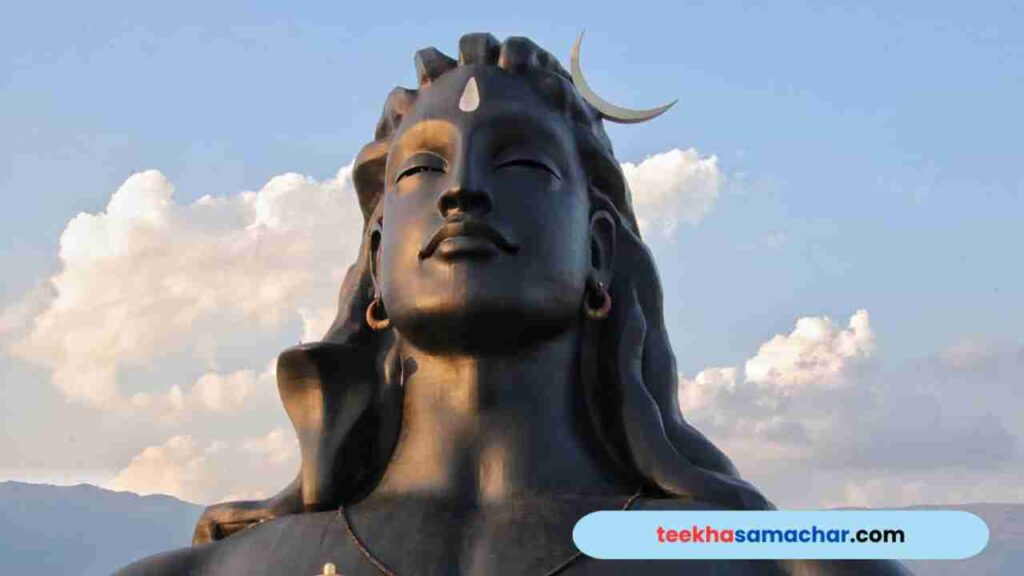Fascinating Life of Lord Shiva : In the rich tapestry of Hindu mythology, Lord Shiva stands as a captivating figure, embodying paradoxes, mysteries, and profound wisdom. As we delve into the intricate layers of his life, we uncover a divine saga filled with tales of creation, destruction, love, and enlightenment. Join us on a journey to unravel the enigmatic essence of Lord Shiva.
Fascinating Life of Lord Shiva : Unveiling the Mysteries

Birth and Early Life:
The birth and early life of Lord Shiva, revered as Mahadeva or the Great God, are shrouded in mysticism and symbolism, offering a glimpse into the cosmic origins and spiritual pursuits that define his essence:
- Supreme Being in Hinduism: Lord Shiva holds the esteemed status of being the Supreme Being in Hinduism. His transcendental nature and role as the cosmic force responsible for creation, preservation, and destruction position him at the pinnacle of the Hindu pantheon.
- Mysterious Birth from the Cosmic Ocean: Shiva’s birth remains veiled in mystery and symbolism, as ancient texts narrate his emergence from the cosmic ocean. Legend has it that he manifested in a column of fire, symbolizing the inception of creation. This enigmatic birth signifies Shiva’s cosmic origin and his pivotal role in shaping the universe.
- Austerities and Renunciation: Lord Shiva’s early life unfolds as a saga of solitude and asceticism. Renouncing the material world, Shiva withdrew to the mountains, immersing himself in deep meditation and introspection. His austere lifestyle reflected a profound detachment from worldly pursuits, paving the way for spiritual enlightenment.
- The First Yogi – Adi Yogi: Shiva’s unwavering devotion and commitment to spiritual pursuits earned him the title of “Adi Yogi,” the first yogi. His deep meditation and yogic practices laid the foundation for profound spiritual teachings that would guide seekers on the path to self-realization.
The birth and early life of Shiva offer a glimpse into the divine journey of a being whose cosmic origins and ascetic pursuits set the stage for a transformative role in the spiritual evolution of the universe. His story embodies the essence of mystery, enlightenment, and the eternal pursuit of spiritual truth.
The Consorts of Shiva:

In the intricate tapestry of Hindu mythology, Lord Shiva’s life is profoundly interwoven with the divine consorts who personify different dimensions of femininity, strength, and unwavering devotion. Each consort contributes to the multifaceted nature of Lord Shiva, enriching his mythology with tales of love, sacrifice, and cosmic balance:
- Devi Parvati – The Embodiment of Devotion and Strength: Devi Parvati, also known as Uma or Gauri, is the most celebrated consort of Lord Shiva. Her story is one of perseverance and profound devotion. Parvati, the daughter of the mountain king Himalaya, was enamored by Shiva’s ascetic charm from an early age. To win his heart, she embarked on a rigorous penance, demonstrating her unwavering dedication.
The union of Shiva and Parvati symbolizes the cosmic balance between masculine and feminine energies. Their celestial marriage, often depicted as the divine dance of Ardhanarishvara, portrays the inseparability of Shakti and Shiva, highlighting the harmonious interplay of creation and destruction in the cosmic dance of existence.
- Devi Sati – The Tragic Tale of Self-Sacrifice: Devi Sati, another significant consort of Shiva, exemplifies self-sacrifice and devotion. Sati, the daughter of the formidable Daksha, fell deeply in love with Shiva against her father’s wishes. In a tragic turn of events, Daksha organized a grand sacrifice and deliberately insulted Shiva by excluding him. Unable to bear the dishonor towards her husband, Sati immolated herself in the fire of her father’s yajna.
Sati’s self-immolation ignited Shiva’s fury, leading to the manifestation of Veerabhadra, a fierce and destructive warrior. This intense episode illustrates the depth of Sati’s devotion and the profound impact of her sacrifice on the cosmic order. The repercussions of Sati’s sacrifice echo through the realms, showcasing the intricacies of divine relationships and the consequences of disrespecting the sacred bond between Shiva and his consorts.
In some renditions of the myth, Sati is reborn as Parvati, emphasizing the cyclical nature of existence and the enduring connection between Shiva and his divine consorts.
These tales of love, devotion, and sacrifice highlight the central role that Shiva’s consorts play in shaping the narrative of Hindu mythology. Each consort brings a unique dimension to Shiva’s character, contributing to the cosmic drama that unfolds in the divine realm. The stories of Parvati and Sati not only evoke profound emotions but also serve as metaphors for the intricate dance of life, death, and rebirth within the realm of Lord Shiva’s divine influence.
ALSO READ : Celebrating Maha Shivratri 2024: Rituals, Significance, and Festive Joy
Symbolism and Iconography:
Lord Shiva’s iconography is a tapestry of profound symbolism, each element carrying deep philosophical truths and spiritual concepts that transcend the physical representation. Let’s delve into the intricate details of Shiva’s symbolism:
- Crescent Moon (Chandra): The crescent moon adorning Shiva’s matted locks holds symbolic significance. It represents the cyclical nature of time and the passage of the lunar calendar. The moon’s waxing and waning phases mirror the perpetual cycles of creation, preservation, and dissolution, aligning with Shiva’s role as the eternal force governing the cosmic order.
- Serpent (Naga or Vasuki): The serpent coiled around Shiva’s neck is a potent symbol of control over desire and ego. The snake, often depicted as Vasuki, signifies the kundalini energy – the dormant spiritual force within every individual. Shiva’s mastery over the serpent symbolizes the transcendence of base desires and the attainment of spiritual enlightenment.
- Trident (Trishul): Shiva’s trident, known as the “Trishul,” is a powerful emblem representing the three fundamental aspects of existence – creation, preservation, and destruction. Each prong symbolizes these cosmic forces, emphasizing the interconnectedness and interdependence of these phases. The Trishul underscores the cyclical nature of life, encouraging practitioners to embrace change and the inevitable cycles of existence.
The Deeds and Epics:
Lord Shiva’s life is a captivating saga woven with deeds and epics that illuminate his multifaceted nature and divine attributes. These tales not only portray Shiva as the destroyer of evil but also highlight his role in maintaining cosmic equilibrium:
- Vanquishing Demons and Asuras: Shiva, in his role as the destroyer, engages in fierce battles against formidable demons and asuras. These mythological encounters symbolize the eternal struggle between good and evil, emphasizing Shiva’s commitment to upholding righteousness and protecting the cosmic order.
- Divine Marriage of Shiva and Parvati: Among the most renowned tales is the divine union of Shiva and Parvati, a celebration of the cosmic balance between Shakti and Shiva, the divine feminine and masculine energies. The Mahashivratri, a grand wedding procession, witnesses celestial beings, gods, and sages bearing witness to this cosmic union, underscoring the divine harmony inherent in the cosmic dance of creation.
- The Tandava – Cosmic Dance: Shiva’s cosmic dance, the Tandava, is a mesmerizing spectacle that symbolizes the rhythm of life, death, and rebirth. This intricate dance form embodies the eternal cycle of creation and destruction, illustrating the interconnectedness of all existence. The Tandava serves as a reminder of the impermanence of the material world and the transformative power inherent in the cosmic forces governed by Shiva.
These profound narratives not only contribute to the richness of Shiva’s mythology but also offer spiritual insights, inviting devotees to contemplate the deeper meanings embedded in these timeless tales.
Symbolism and Iconography:
Lord Shiva’s iconography is a tapestry of symbolism, where every element carries profound meanings, reflecting deeper philosophical truths and spiritual concepts. Each aspect of his divine appearance is not merely an artistic representation but a gateway to understanding the cosmic principles that Shiva embodies.
- Crescent Moon (Chandra on Jata): The crescent moon gracefully adorning Shiva’s matted locks holds a symbolic significance that transcends mere lunar aesthetics. It symbolizes the cyclical nature of time and the passage of the lunar calendar. As the moon waxes and wanes, it mirrors the eternal rhythm of creation, preservation, and dissolution—a celestial reminder of the continuous flow of existence.
- Serpent (Naga or Vasuki): The serpent coiled around Shiva’s neck is a powerful emblem of control over desire and ego. In Hindu symbolism, the serpent represents the primal energy (Kundalini) residing within every individual. By taming this serpent, Shiva illustrates mastery over the instinctual aspects of human nature. The coiled serpent also serves as a protective garland, emphasizing Shiva’s role as the guardian of cosmic order.
- Trident (Trishul): Perhaps one of the most iconic symbols associated with Lord Shiva, the trident, or Trishul, carries profound metaphysical significance. Comprising three prongs, the Trishul represents the three fundamental aspects of existence: creation, preservation, and destruction (or dissolution). These three forces, known as Brahma, Vishnu, and Shiva, together form the cycle of cosmic evolution. Shiva’s trident signifies his authority over these cosmic powers and emphasizes the interconnectedness of the cosmic life cycle.
- Third Eye (Triyambaka): The third eye on Shiva’s forehead, often referred to as the “eye of wisdom” or “eye of intuition,” represents heightened perception beyond ordinary sight. It signifies insight, knowledge, and spiritual awakening. When opened, Shiva’s third eye has the power to destroy ignorance and unveil the true nature of reality. The third eye underscores Shiva’s role as the harbinger of wisdom and enlightenment.
- Ashes (Bhasma): Lord Shiva is often depicted smeared with ashes (bhasma) on his body. This symbolic act reflects the transient nature of life and the inevitability of death. The ashes also represent the ultimate reality that remains when all material forms disintegrate—an acknowledgment of the impermanence of the physical world.
- Damru (Drum): Shiva’s damru, a small drum, symbolizes the primal sound of creation. Its rhythmic beat represents the cosmic vibrations that give rise to the universe. The damru’s two sides symbolize the dual nature of existence—pairs of opposites such as life and death, good and evil, and creation and destruction.
Understanding Lord Shiva’s iconography goes beyond aesthetics; it is an exploration of profound spiritual concepts that guide seekers on the path to self-realization. Each symbol encapsulates a timeless truth, inviting devotees to contemplate the deeper meanings and embark on a spiritual journey towards the understanding of existence and divine consciousness.
ALSO READ : Dakshin Ke Badrinath Temple Opens Its Doors for Darshan : Telangana Welcomes the Divine
Conclusion: Fascinating Life of Lord Shiva
As we conclude our exploration of the life and mythology of Lord Shiva, we are left mesmerized by the depth of his persona and the timeless wisdom embedded within his tales. From his divine union with Parvati to his cosmic dances and fierce battles, Shiva epitomizes the eternal dance of existence, inviting us to embark on a journey of self-discovery and spiritual enlightenment.
